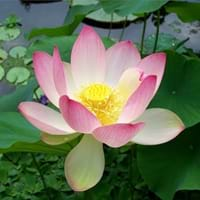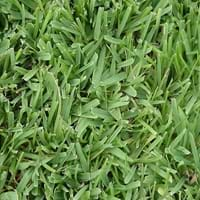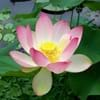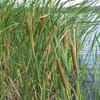Life Span
Perennial
Perennial
Origin
Southern Asia
World/Pandemic
Types
Not Available
Not Available
Number of Varieties
Not Available
Habitat
Ponds
Subtropical climates, Tropical regions
USDA Hardiness Zone
9-12
8-10
AHS Heat Zone
12-3
Not Available
Sunset Zone
21,22
H2, 17, 24
Habit
Clump-Forming
Mat-forming
Minimum Width
Not Available
Flower Color
White, Red, Pink, Light Pink, Hot Pink, Rose, Coral
Green, White
Flower Color Modifier
Bicolor
Bicolor
Fruit Color
Non Fruiting Plant
Non Fruiting Plant
Leaf Color in Spring
Lime Green, Sea Green
Green
Leaf Color in Summer
Lime Green, Sea Green
Light Green
Leaf Color in Fall
Lime Green, Sea Green
Green
Leaf Color in Winter
Not Available
Green
Leaf Shape
Orbicular
Lance shaped
Plant Season
Summer, Fall
Spring, Summer, Fall, Winter
Sunlight
Full Sun, Partial Sun
Full Sun, Partial Sun
Type of Soil
Clay, Loam
Clay, Loam, Sand
The pH of Soil
Neutral
Neutral, Alkaline
Soil Drainage
Poorly Drained
Average
Bloom Time
Late Spring, Early Summer, Summer, Late Summer
Spring, Late Spring, Early Summer, Summer, Late Summer
Tolerances
Wet Site
Pollution, Salt, Soil Compaction
Where to Plant?
Container, In Water, Pot
Ground
How to Plant?
From Rhizomes, Seedlings
Sprigging or Stolonizing
Plant Maintenance
Medium
Medium
Watering Requirements
Requires 4 to 8 inches of water above the soil line
Needs more water during establishment
In Summer
Lots of watering
Lots of watering
In Spring
Moderate
Moderate
In Winter
Average Water
Average Water
Soil pH
Neutral
Neutral, Alkaline
Soil Type
Clay, Loam
Clay, Loam, Sand
Soil Drainage Capacity
Poorly Drained
Average
Sun Exposure
Full Sun, Partial Sun
Full Sun, Partial Sun
Pruning
Cut away fading foliage
Remove damaged leaves, Remove dead branches, Remove dead leaves
Fertilizers
20N–4.4P–16.6K at 20-d intervals
organic fertlizers
Pests and Diseases
Aphids, Caterpillars
Dollar spot, Leaf spot
Plant Tolerance
Drought
Drought
Flowers
Showy
Insignificant
Flower Petal Number
Single, Double, Semi-Double
Single
Foliage Texture
Bold
Fine
Foliage Sheen
Matte
Matte
Invasive
Sometimes
Sometimes
Attracts
Beetles, Insects
Billbugs, Crickets, Cutworms
Allergy
Constipation
Not Available
Aesthetic Uses
Beautification
Ground Cover
Beauty Benefits
Promotes healthy skin, Provides herbal hair care
Not Available
Environmental Uses
Air purification
Erosion control
Medicinal Uses
Antidiarrhoeal, Astringent, Cancer, Cardiotonic, Febrifuge, Hypotensive, Resolvent, Stomachic, Tonic
No Medicinal Use
Part of Plant Used
Flowers, Leaves, Root, Seeds, Stem
Not Available
Other Uses
Leaves are used to wrap small parcels, Roasted seed is used as a coffee substitute, Root is used as a vegetable
Used as a golf course turf, Used to feed livestock
Used As Indoor Plant
Yes
No
Used As Outdoor Plant
Yes
Yes
Garden Design
Feature Plant, Tropical, Water Gardens
Lawns and Turf
Botanical Name
NELUMBO nucifera
PASPALUM vaginatum
Common Name
East Indian Lotus, Sacred Lotus
Biscuit Grass, Seashore Paspalum
In Hindi
पवित्र कमल
Seashore Paspalum
In German
Heiliges Lotus
Seashore Paspalum
In French
Lotus Sacré
Seashore Paspalum
In Spanish
loto sagrado
Paspalum
In Greek
ιερή Lotus
Αιγιαλός Paspalum
In Portuguese
Lotus sagrado
seashore Paspalum
In Polish
Sacred Lotus
Nad morzem Paspalum
In Latin
sacra Lotus
Paspalum maris
Phylum
Magnoliophyta
Magnoliophyta
Class
Magnoliopsida
Lilopsida
Order
Proteales
Cyperales
Family
Nymphaeaceae
Poaceae
Clade
Angiosperms, Eudicots
Angiosperms, Commelinids, Monocots
Tribe
Not Available
Paniceae
Subfamily
Nelumbonaceae
Panicoideae
Number of Species
Not Available
Not Available
Properties of Sacred Lotus and Seashore Paspalum
Wondering what are the properties of Sacred Lotus and Seashore Paspalum? We provide you with everything About Sacred Lotus and Seashore Paspalum. Sacred Lotus doesn't have thorns and Seashore Paspalum doesn't have thorns. Also Sacred Lotus does not have fragrant flowers. Sacred Lotus has allergic reactions like Constipation and Seashore Paspalum has allergic reactions like Constipation. Compare all the properties and characteristics of these two plants. Find out which of these plant can be used as indoor plant. If you are interested to decorate your house and garden, find out aesthetic uses, compare them and select the plant which will beautify your surrounding. Along with beautification, try comparing medicinal and edible uses of Sacred Lotus and Seashore Paspalum and you can choose the plant having best and most benefits.
Season and Care of Sacred Lotus and Seashore Paspalum
Season and care of Sacred Lotus and Seashore Paspalum is important to know. While considering everything about Sacred Lotus and Seashore Paspalum Care, growing season is an essential factor. Sacred Lotus season is Summer and Fall and Seashore Paspalum season is Summer and Fall. The type of soil for Sacred Lotus is Clay, Loam and for Seashore Paspalum is Clay, Loam, Sand while the PH of soil for Sacred Lotus is Neutral and for Seashore Paspalum is Neutral, Alkaline.
Sacred Lotus and Seashore Paspalum Physical Information
Sacred Lotus and Seashore Paspalum physical information is very important for comparison. Sacred Lotus height is 30.00 cm and width 90.00 cm whereas Seashore Paspalum height is 2.50 cm and width Not Available. The color specification of Sacred Lotus and Seashore Paspalum are as follows:
Sacred Lotus flower color: White, Red, Pink, Light Pink, Hot Pink, Rose and Coral
Sacred Lotus leaf color: Lime Green and Sea Green
Seashore Paspalum flower color: Green and White
- Seashore Paspalum leaf color: Green
Care of Sacred Lotus and Seashore Paspalum
Care of Sacred Lotus and Seashore Paspalum include pruning, fertilizers, watering etc. Sacred Lotus pruning is done Cut away fading foliage and Seashore Paspalum pruning is done Remove damaged leaves, Remove dead branches and Remove dead leaves. In summer Sacred Lotus needs Lots of watering and in winter, it needs Average Water. Whereas, in summer Seashore Paspalum needs Lots of watering and in winter, it needs Average Water.





